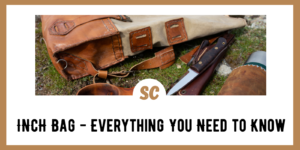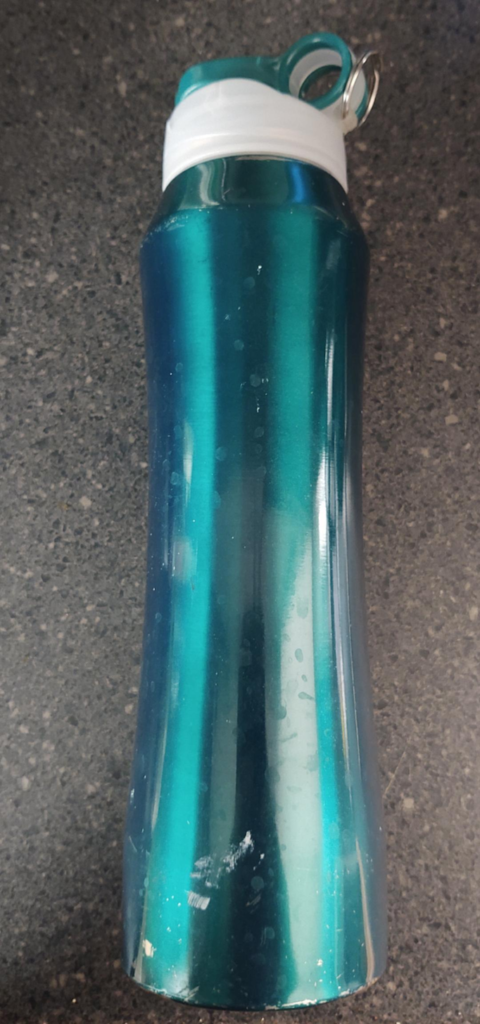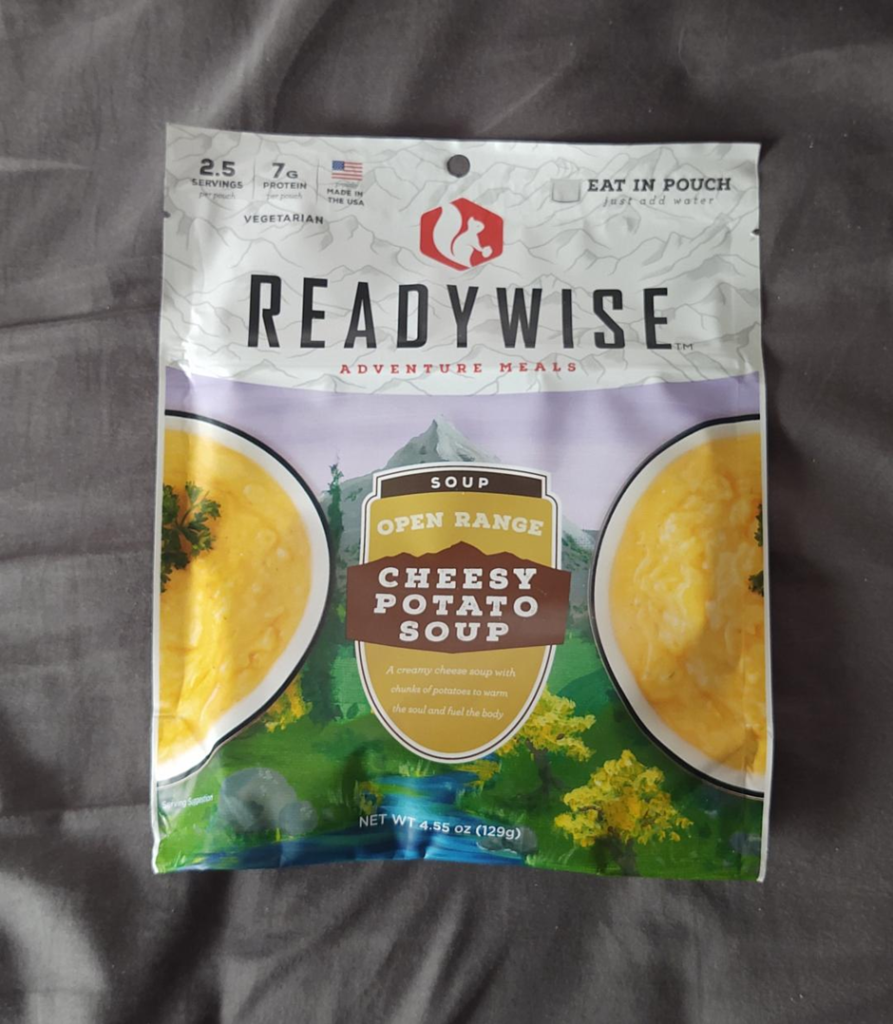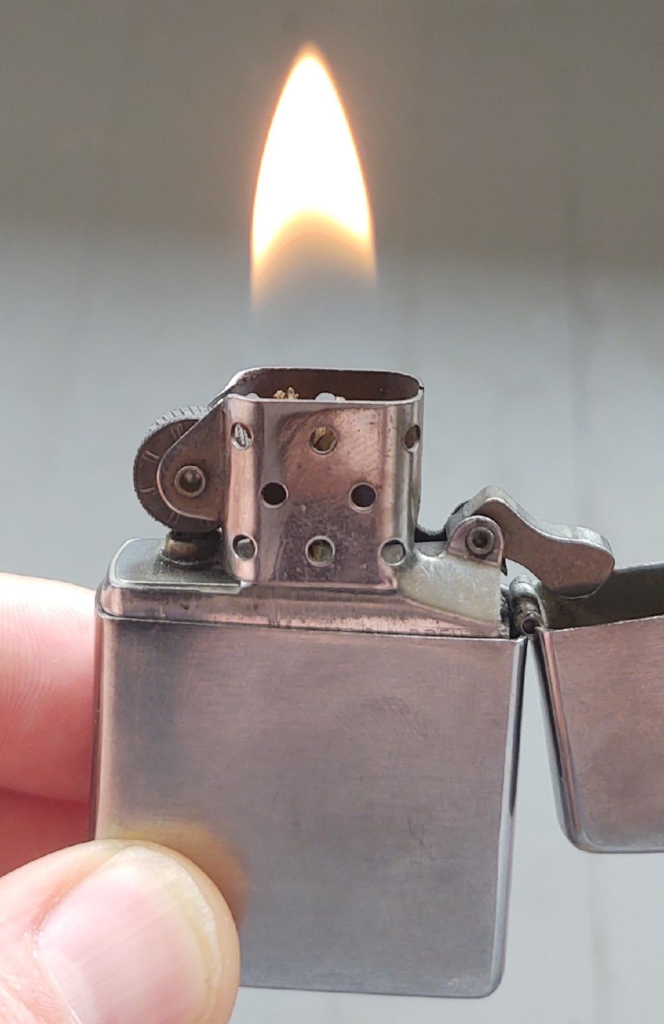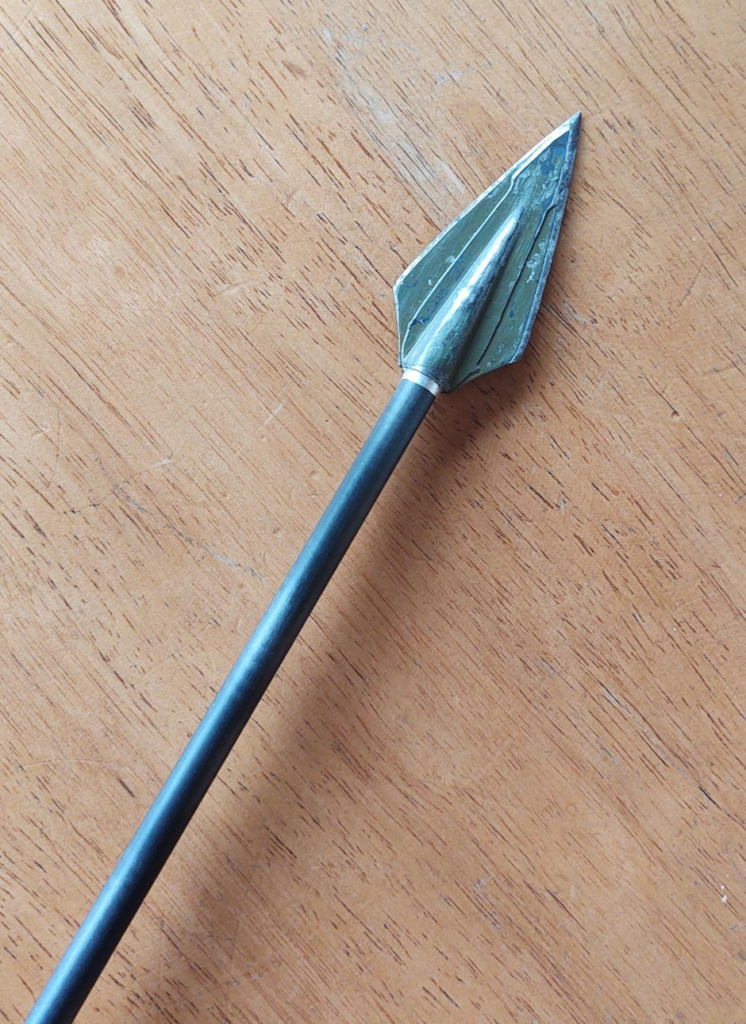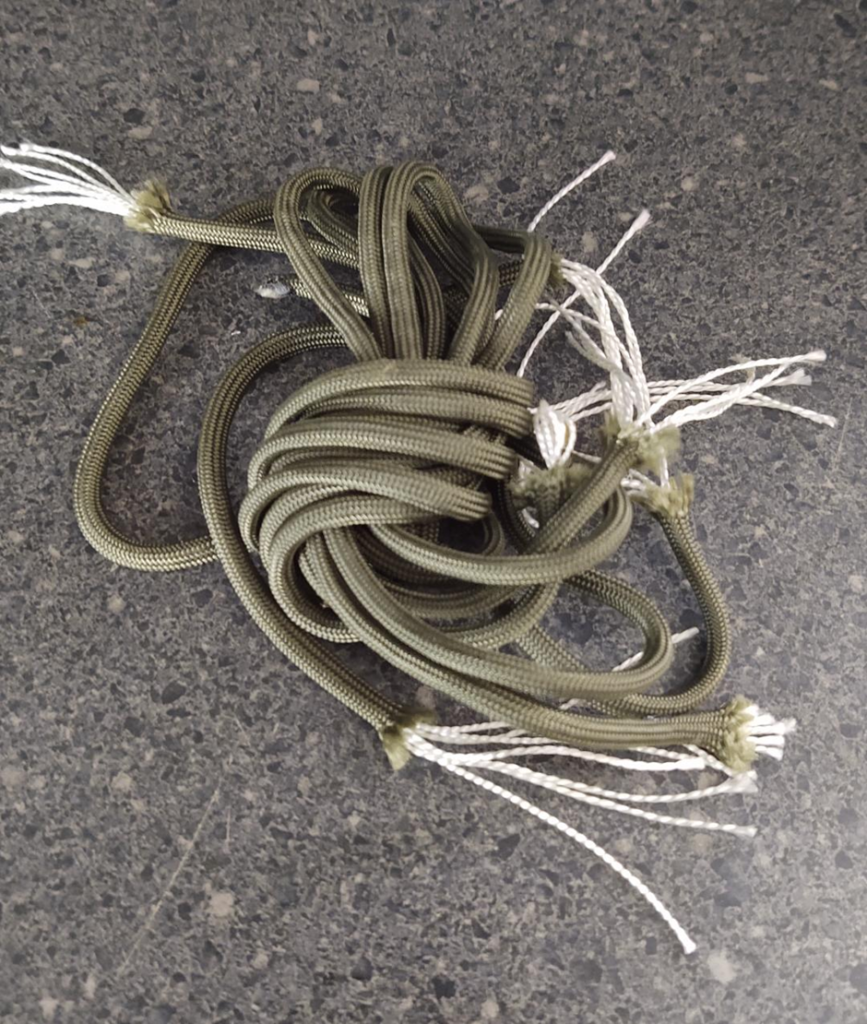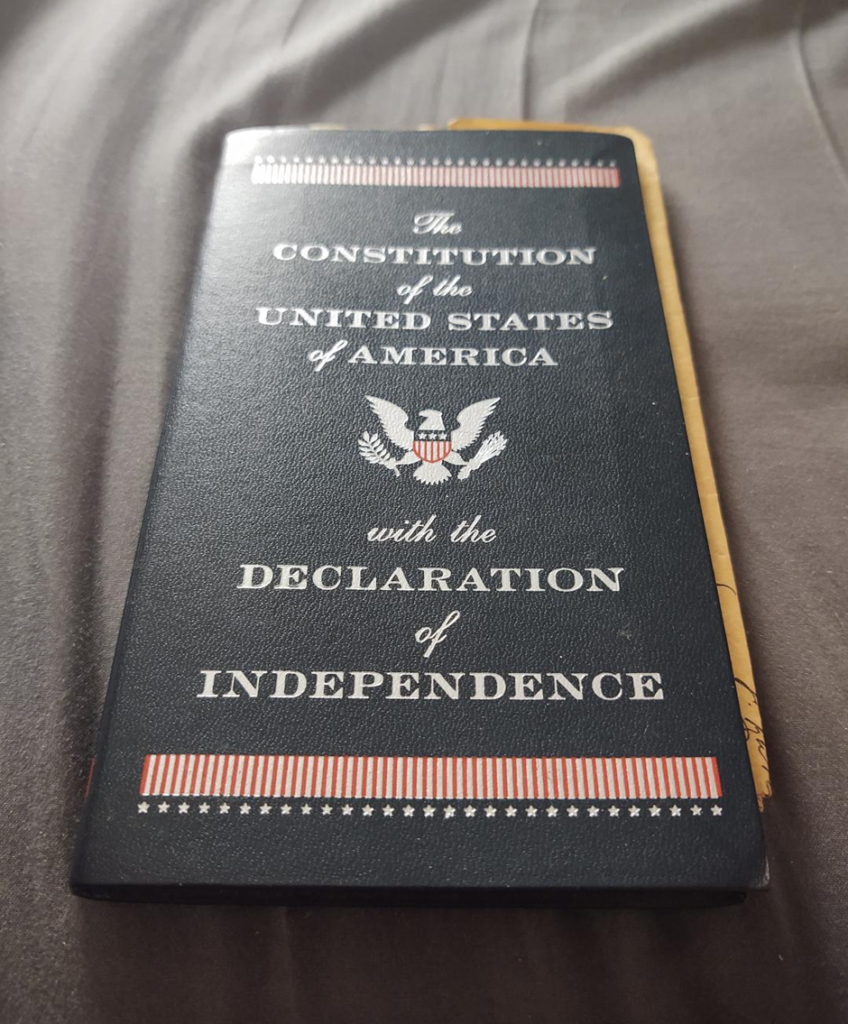Years ago when I first got involved with emergency preparedness and survival related topics, one of the first things I learned about was bug out bags. After sifting through a bunch of suggestions and recommendations, it didn’t take me long to make one.
When I was done building my bug out bag, I was extremely satisfied with it – for about 60 seconds.
In my mind, I tend to take things to the nth degree, and something quickly dawned on me. What if there was a situation that caused me to leave my home for longer than a few days? And what if I didn’t have a pre-planned resupply location, or a bug out location. Would a bug out bag be enough for me to essentially “live off the land?”
The answer was loud and clear: No, it wouldn’t.
So, I set my sights on building a bag that would be more substantial and sustainable. After talking with a few buddies, they introduced me to the INCH system.
My prayers had been answered! All I had to do then was put it together and tweak it to my liking, which is a never-ending process. Seriously, I have been doing this for years, and I still make adjustments from time to time.
But let’s start from the beginning so that we are all on the same page. In this article, we’ll be breaking down:
- What an INCH system really means (and how it’s different from a normal Bug Out Bag)
- What to include in your INCH bag
- Common INCH bag FAQs
SKIP AHEAD
INCH Definition
INCH bag stands for “I’m Never Coming Home.” The intended purpose is to create a system of gear that will aid you in long-term wilderness survival, although a person could make a go of it in an urban environment as well.
The INCH concept doesn’t just apply to bags, but can be used to create vehicle/trailer loadouts as well. However, this article will be focused on the creation of an INCH bag.
Inch Bags vs Other Bags
Inch bags are quite a bit different than other types of loadouts and emergency bags (like bug out bags, get home bags, EDC (everyday carry), and72-hour bags).
Almost all other loadouts are intended for short term periods, and they are based on the presumption that a person will be headed to a location that has more supplies or to their home.
Other loadouts, like a bug out bag, are meant to act as bridges. They help you get from you are to a location that is safer and has more supplies. On the other hand, an INCH bag is going to be more tool and gear-heavy to help you build your own bridge, or to help sustain you for long periods.
As the name suggests, an INCH bag should put you in the mindset of, “I’m never coming home.” Now, it may be possible that you could return home one day, but that may not happen for a long time.
Choosing a Bag
Alright, now that we know what an INCH bag is intended for, it’s time to think about the bag itself. Obviously, you are going to use whatever bag you have access to or what your budget allows.
However, if you have the opportunity and the funds to choose, here are some characteristics to look for in an INCH bag:
1. Style
I think most people would choose a backpack-style bag. I believe this to be one of the best options. They are widely available, relatively affordable, people are familiar with them, and they are comfortable to carry on the back.
2. Size
Honestly, there really isn’t a maximum size limit for this type of bag. Since an INCH bag is going to be your means of “starting over,” it needs to be able to carry a decent amount of stuff. The limiting factor of an INCH bag’s size is really going to be how physically fit a person is, but the bag should have a minimum capacity of around 30 liters up to around 75-80 liters.
Another metric that you can use is to keep the bag round 25% of your body weight. Keep in mind that bags for kids should not exceed 10% of their body weight.
3. Frame
Since the bag itself is going to be larger and it will be packed with more gear than a bug out bag, you’re going to want your INCH bag to have an internal frame.
A frame is going to make carrying a heavier load much more comfortable. After just a few miles, you will be incredibly thankful for it.
4. Color
Like bug out bags, you don’t want your INCH bag to stand out. Do your best to stay away from military patterns or anything else that screams: “Hey look at me, I’m super prepared!”
5. Compartments
The bag should have at least two or three zippered compartments.
Separate compartments offer options for organization and quick access to certain items so that you don’t have to dig through your bag. The more compartments a bag has, the better.
6. Straps
Just like the previous sections, the more straps the bag has, the better. More straps allow for different carrying options. Since the bag will ideally be a backpack-style bag, a chest strap and a waist strap will help to secure the bag to your person and make carrying the INCH bag much more comfortable.
Additionally, extra straps on the exterior of the bag will provide anchor points for securing various types of gear and supplies.
Essential Inch Bag Checklist, Explained:
Water, Filtration, and Purification
Water is a critical resource that our survival depends on. At a minimum, we need access to one gallon of clean drinking water per person per day.
The problems is that water is quite heavy. At roughly 8 pounds per gallon, eight days’ worth of water would weigh 64 pounds.
Since you won’t be able to carry a lot of water with you, it is more important to have items that will help you to collect, transport, filter, and clean water.
This is why it’s a good idea to carry around 3-4 water bottles or containers.
Some of them can be constructed from hard plastic, like a Nalgene, but at least one of them should be an aluminum or a stainless steel water bottle. Avoid bottles that are double walled as these make boiling water much more difficult.
Also, even in modern times, one of the best ways to make water safe from microorganisms is through boiling, which is why you need at least a few metal water bottles, cup, or small pot.
Water purification tablets aren’t a bad idea, but they will eventually run out. The same can also be said for commercialized filters, so pack several bandanas and cloth material that will serve dual purposes.
Food
Just like the previous section about water, you are not going to be able to carry enough food in one pack to sustain you for a long-term situation. However, the bag does need to have some food items that will keep you going at the beginning.
A couple of MRE’s are great options because they provide a lot of calories, can be eaten cold or hot, and they come in a variety of different meal options. Other survival food options include dehydrated or freeze-dried items.
Additionally, long lasting snack food (nuts, jerky) and some drink options such as sports drink mixes, tea, and coffee should be included in your food supplies.
You are also going to want a small mess kit that includes a metal canteen and cup, as well as a small pot for cooking and boiling water in. And don’t forget a durable eating utensil like a spork.
Lastly, you will need items that will help you obtain food in the wild when your food rations run out. Items like fishing line and tackle, snare wire for trapping, and a bow and arrow or firearm.
Finding Food When Your Rations Run Out
While a fishing rod is not a required tool for fishing, they do make the task much easier. A full-sized fishing rod may be cumbersome to carry, so consider carrying a smaller fishing rod like those used for ice fishing or any other kind of compact fishing rod.
When hunting or trapping for food, your best bet is to focus on small game. Small game is more abundant, and they pose less of a danger. Although slingshots take a good deal of practice to master, they are effective hunting tools. There is even a survival slingshot now that comes with a bunch of different attachments and can be setup to shoot arrows.
Speaking of arrows, a survival bow is a great tool to add to an INCH bag. What makes a survival bow different is that they can easily be disassembled and assembled, usually without any tools. This makes them much more compact and convenient to carry. I highly recommend checking out the survival bows by SAS (Survival Archery Systems).
Shelter
The elements can kill just as fast as anything else. Considering this loadout is for a long-term scenario, you are going to want to be amply prepared for protection and comfort.
Mylar survival blankets are incredibly cheap, compact, and effective when used properly. However, they aren’t exactly meant for repeated use, so be sure to pack more than one.
A foam sleeping pad will make laying on the ground much more comfortable, and it will provide an insulation barrier between you and the cold ground. This is incredibly important, as laying directly on the ground will suck the warmth right out of your body.
Pack sleeping bags that have the coldest rating you can find and pair this with the foam sleeping pad. If you add in a wool blanket, you should stay extra warm and comfortable. Also, a 8’x10’ nylon camping tarp can be set up in an array of different configurations, and it will provide some protection from the wind and rain.
If you have the ability to carry one, add in a tent and some extra hand warmers.
For warmer climates, a hammock is easy to transport and will help to get you up off the ground and away from creepy crawlers. Be sure to take into account the region you will most likely be in and plan for hot and cold weather gear.
Making Fire
Your ability to make fire will be paramount when trying to survive in the outdoors long-term. Fire will give you warmth, light, protection from predators and insects, the ability to make tools, and, of course, to cook and boil water.
You are going to want to pack lots of tinder, such as fatwood or any other source of pre-packaged fire starter, as well as several ignition tools such as lighters, ferrocerium rods, stormproof matches, and a magnifying glass. If you have a way to get power, then adding an electric lighter would be a decent backup fire starter. Be sure to pack all of this in a hard case that is waterproof.
A biomass stove or one that uses a canister of fuel would also be extremely helpful in containing a fire and making cooking easier.
Personal Hygiene
Just because you are in a survival situation doesn’t mean you shouldn’t plan on keeping up with hygiene. In fact, it is important to do so because it will help to prevent many health problems, as well as promote an overall sense of well-being.
Some hygiene items to pack include toilet paper, eyewear supplies, hand sanitizer, toothbrush and paste, bar soap, quick dry towels, and wet wipes.
Clothing
Due to the effect of the elements, this category is just as important as the shelter category, and it should be well thought out and planned for the region you will be in.
Items that you are going to want to wear and pack include a coat, jacket, poncho, several pairs of thick socks, boots, cold weather gloves, work gloves, hat, and at least one additional full outfit. Don’t forget rain gear such as rain pants, jacket, and a large enough poncho that will entirely cover your bag.
Also, clothing made from natural materials are some of the best cold-weather items you can wear.
Tools
The tools that you pack may vary slightly depending on the environment you will be in, your skill level, and your personal preferences. You can swap items out as you wish, but here are some basic tools that should be a part of every INCH bag:
Survival Knife
For a survival knife, choose a fixed blade that is between 7”-11” with a single cutting edge. If you are carrying a coated knife, then I would suggest adding a non-coated blade that can be used for food preparation, such as a stainless steel knife.
Multi Tool
A multi tool is one of my favorite tools because it is way more useful than people give it credit for. Get whatever brand you like, but I suggest getting a plier-style multitool, like a Leatherman.
Machete, Axe, or Hatchet
Carry a machete, axe, or hatchet (depending on the environment) so that you can avoid using your knife as a chopping tool. Proper chopping tools are more effective at getting work done. I would also encourage packing a folding saw and pry bar.
Shovel
A small shovel would also be extremely useful, but I would recommend staying away from ones labeled as a “survival shovel.” They are usually over-priced and don’t work as advertised.
The same goes for a “survival hatchet.” It’s extremely important that you get the right tools for the job, otherwise your survival gear will fail when you need it the most.
Security
Some people may not care for this section, but the reality is that you need to think of self-defense. You need the ability to protect yourself from all sort of different predators.
One of the best tools for self-defense is, of course, a firearm. Be sure to get properly trained and have extra ammunition.
Other options include a bow and arrow, pepper spray/mace, tasers, slingshots, etc.
Lighting
If you can’t see where you are going, then you are going to have a real tough time staying safe and on the path. I would suggest getting the brightest light that you can afford. Since this is for long-term, I would opt for one that uses rechargeable batteries.
I think many people will probably have some kind of small portable solar charger, and this will keep your light going much longer than traditional batteries would. There are even lights available that are completely solar powered. If you don’t get a rechargeable light, then pack extra batteries and some tea candles.
Other than a handheld flashlight, pack a headlamp, too. Not only are these very lightweight, but they also provide hands-free operation. If you can get a light with a red lens, that would be helpful in preserving your night vision.
Navigation and Communication
An emergency hand crank NOAA/AM/FM radio will help keep you up to speed on what’s happening in the world, whereas a HAM radio or some walkie talkies will allow you to communicate directly with other people.
Of course, be sure to pack physical maps of the region you will be in, as well as several compasses. Also, be sure you know how a map and compass work. If you don’t, it’s not difficult to learn.
If you plan on taking your smartphone with you – and I’m sure most people are – you will want a few things:
First, get a portable solar charger. If the phone runs out of juice, then it won’t be all that useful.
Second, download maps, survival information, and any other important information that you feel you need onto the phone. This way the information can be accessed without an internet connection.
Lastly, you may want to check into investing in a protective container that the phone can be placed into and that will block incoming and outgoing signals.
The last couple of items I suggest carrying are an emergency whistle, a pad of paper with a pencil, ball point pen, and a sharpie. An emergency whistle is a great signaling device and the stationary can be used to take notes or for leaving messages.
First Aid Kit
If you are using your INCH survival bag, then it’s likely that medical care may not be available. You will need to be your own doctor.
Other than the typical “boo boo” kit, be sure to carry a tourniquet, trauma dressings, bandages, alcohol swabs, antibiotics, pain medications, antihistamines, prescriptions, and anti-diarrheal meds.
Supplies
There are a lot of random supplies that you could add to this bag, but they will take up space quickly and add weight.
Below are some items that almost everyone already has. If you don’t, then they are extremely affordable. Additionally, the items listed below are multipurpose.
Pack one entire roll of duct tape. Duct tape is a miracle worker, and it has a ton of useful applications such as repairing gear, making straps, tying stuff or bad guys up and it even makes a decent fire-starting aid. An easy way to carry extra duct tape is by making some tool wraps around some of your items.
Zip-lock bags are incredibly useful, and several of them are easily packed into a pocket. They can be used as general collection containers, waterproofing items, water collectors, gloves, and patching material.
Large contractor-grade garbage bags are just as useful – if not more so – than Zip-lock bags. These can be picked up at most hardware stores. While they will be more expensive, they are worth it. Keep in mind that the higher the mil count on the box, the thicker and stronger the bag will be.
A minimum of one bandanna should be in your kit. Believe it or not, a bandanna is almost as versatile as duct tape. It can be used as a head covering, mask, bandage, water filter, char cloth, signaling device, etc. It’s fine to have a few that are camouflage or neutral in color, but I would suggest to also have a few that are brightly colored.
A minimum of one hundred feet of paracord should also be packed. Like duct tape, cordage is an invaluable item to have, and the tasks it can be used for is far too long to list here.
If you prefer something other than paracord, then by all means pack that instead. I choose paracord because it is extremely lightweight, strong, affordable, comes in a variety of different colors, and it can be easily taken apart for various tasks.
Other than the main fishing supplies listed earlier in the article, I would also pack an emergency fishing kit that is smaller and fits in a pocket. Fishing is an extremely low-energy way of obtaining food, but making fishing line and hooks naturally can be a difficult process.
Buying extra fishing line and hooks at the store and storing them in a small container will be worth the effort.
An emergency sewing kit is another desirable item. Don’t worry if your not a seamstress (I’m not and I carry one of these kits). All you need to know is how to thread a needle and some very basic stitches so that you can keep your gear maintained. Feel free to add other items to this kit so that you have a well-rounded repair kit.
For warmer, buggy regions, mosquito netting will be a godsend. Thankfully, it won’t take up a lot of space.
NBC (nuclear, biological, chemical) gear may also be something that is needed, but it is up to you to make the call of whether or not to carry it. An example of an item in this category would be a gas mask.
Money and Barter
As the old saying goes, “cash is king.” To think you will only be in some remote area never to encounter another human being again – or to believe that you will never need additional supplies or services – is foolish.
At some point, you may need to get clothes, food, water, a tool, or a ride to another location. In such a situation, most people are not going to provide these things out of the goodness of their hearts. So, you will need some cash for payment or other goods to barter with.
Carry at least several hundred dollars in small bills and perhaps a roll of quarters. Precious metals like gold or silver coins or even jewelry would be acceptable to most people.
In terms of bartering, you will need things that people want like tobacco, alcohol, coffee, chocolate, etc.
Documents and Other Items
This is the last category in the list, and I know there might be a few things that some people have a problem with because they are not strictly “survival stuff.”
However, if you are to leave your home with the intention of never returning, there are a few things you should think about bringing with you.
For starters, family keepsakes. Unfortunately, I’m not talking about that antique grandfather clock sitting in the living room as that would be obviously difficult to transport. However, a handful of photos, a small photo album, or a small pocket watch wouldn’t be too cumbersome to carry.
Some documents that you will certainly want to take with you include things like passports, birth certificates, ID, and any other pertinent documentation.
If you reside here in the United States of America, I would include a travel-size copy of the U.S. Constitution and Bill of Rights. Having access to these documents could come in handy down the road.
Lastly, I would make room in the INCH bag for any survival guides that you feel you need. It’s next to impossible to remember everything you need to know how to do, and having a reference guide will be an invaluable item.
Ultimate INCH Bag Gear Checklist, Shortened
Water and Water Filtration
- One 32oz wide-mouth hard plastic bottle filled with water
- Add additional 3 20oz water bottles (stainless steel water bottles will allow you to boil water in them)
- One small metal cup or pot to boil water in
- Water purification tablets
Food
- 3 MRE’s (Meals Ready to Eat) or meals that provide as many calories as possible
- Energy snack food such as jerky, granola bars, energy bars, instant oatmeal, nuts, trail mix, etc.
- Coffee, tea, sports drink packets like Gatorade, spices, sugar
- Metal canteen, cup, small pot
- One metal or hard plastic spork (non-disposable)
- Fishing line and tackle, Snare wire, traps, or cordage than can be used as snares
- Large metal pot or pan
Shelter
- Mylar survival blanket
- Foam sleeping pad or hammock for warming weather
- Sleeping bag rated for the coldest temperatures you expect
- 8’x10’ nylon camping tarp
- Wool blanket
Fire-Making
- 2 x butane lighters (BICs)
- One ferrocerium rod with optional magnesium rod
- Stormproof matches in a waterproof container
- Prepackaged fire starting tinder
- Fatwood
- One small magnifying glass
- Add one bio mass camp stove or a stove that uses canister fuel
Hygiene and Personal Items
- Toilet paper
- Eyewear/contacts and supplies needed for both i.e. cleaning solution and eyeglasses repair kit
- Hand sanitizer
- Toothbrush
- Sunglasses
- Bar soap
- Dish soap
Clothing
- Coat
- Jacket
- Poncho
- 2 Pairs of socks
- 2 Outfits (one that is worn and one that is packed)
- Boots
- Gloves
- Hat
Tools
- Survival knife that is full tang with a single cutting edge and overall length of 7”-11”
- Multitool
- Machete or Axe (depending on your environment)
- Folding saw and pry bar
Security
- Firearm and ammo
- Pepper spray
- Bow and arrow
- Slingshot
- Taser
Lighting
- LED headlamp
- LED 500+ lumen compact waterproof flashlight with extra batteries
- 3 tea candles or one large candle
- A red lens flashlight to preserve night vision
Navigation and Communication
- Emergency hand crank NOAA/AM/FM radio/flashlight
- Maps and compass
- HAM Radio or handheld transceiver (walkie talkie)
- Smartphone (GPS enable, download maps and survival guides to use offline)
- Small pad of paper
- Pencil, Sharpie, pen
- Emergency whistle
First Aid Kit
- Tourniquet
- Trauma dressing
- Bandages
- Antibiotic cream
- Alcohol swabs
- Pain medication, antihistamine, prescriptions, sunscreen, potassium iodide, anti-diarrheal, first aid manual, cotton swabs, additional pain/fever meds, burn relief gel, rubbing alcohol, peroxide, and suture kit.
Supplies
- Duct tape
- 2 zip lock bags
- Large contractor-grade garbage bags (the higher the mils, the tougher they will be)
- 1 bandanna
- 100 feet military spec 550 paracord
- Emergency fishing kit
- Emergency sewing kit
- Small repair kit
- Mosquito net
- NBC gear i.e. gas mask
- 4-way water key
- Portable solar charger
Money and Barter
- $1,000 cash and $10 in coins
- Cigarettes, coffee, whiskey
Documents and Items
- Family photos
- Keepsakes
- Important documents such as passport, birth certificate, etc.
- Additional maps
- U.S. Constitution
- Survival guides (foraging for wild edibles, tracking, trapping, SERE, etc.)
INCH Bag Pros and Cons
Pros
- Should have most of what you need to survive long periods
Cons
- Will be heavy and difficult to carry
- May make you a target
FAQs
Do I only need one INCH bag?
Every able-bodied adult member of your group should have their own INCH bag.
Can I make an INCH bag for my kid?
Adult kids, sure. But given what needs to go into an INCH bag, small kids won’t be able to safely carry one. Remember, a bag for a young kid shouldn’t exceed 10% of their weight.
Should I buy a fully stocked INCH bag?
Generally speaking, no. Many premade kits are lacking in quality, might not have everything you need, are packed by someone else so you don’t know exactly what’s in it, and they are expensive.
Where should I keep my INCH bag?
Keep your INCH bag in a safe location that you can readily get to. If you are going to be on the road or far enough away from home that makes you uncomfortable, pack your INCH bag in your vehicle.
How do I know if my INCH bag is too heavy?
If you can’t walk more than a few miles with the pack without becoming overly tired, then the bag is too heavy. Start off with a lighter pack and increase your physical activity until you reach the desired pack weight.
Can a school backpack be used as an INCH bag?
If that is all you can afford, then you will find a way to make it work. But generally speaking, a typical school backpack is going to be too small, not very durable, and not very comfortable to carry.
How do I decide if I should use my INCH bag or my Bug out Bag?
Usually, a bug out bag is going to be used for a small scale localized event, whereas an INCH bag is for a more serious, widescale event.
Final Thoughts
The most important thing I want you to remember about an INCH pack is that you need to view it as your kit for starting over. It is not your typical bug out bag or home bag. It is your “I’m never coming home” bag. All the gear that you pack into it must be well thought out and they need to be the best quality that you can afford.
Basic survival gear is a must, but since INCH bags are designed for an extended period, more than a few items need to be renewable (such as solar-powered flashlights) and durable (like shovels that are not advertised as survival shovels).
Lastly, what you have in your head is just as important as the gear you carry. Be sure to come back and visit the site often and brush up on some daily survival tips.


